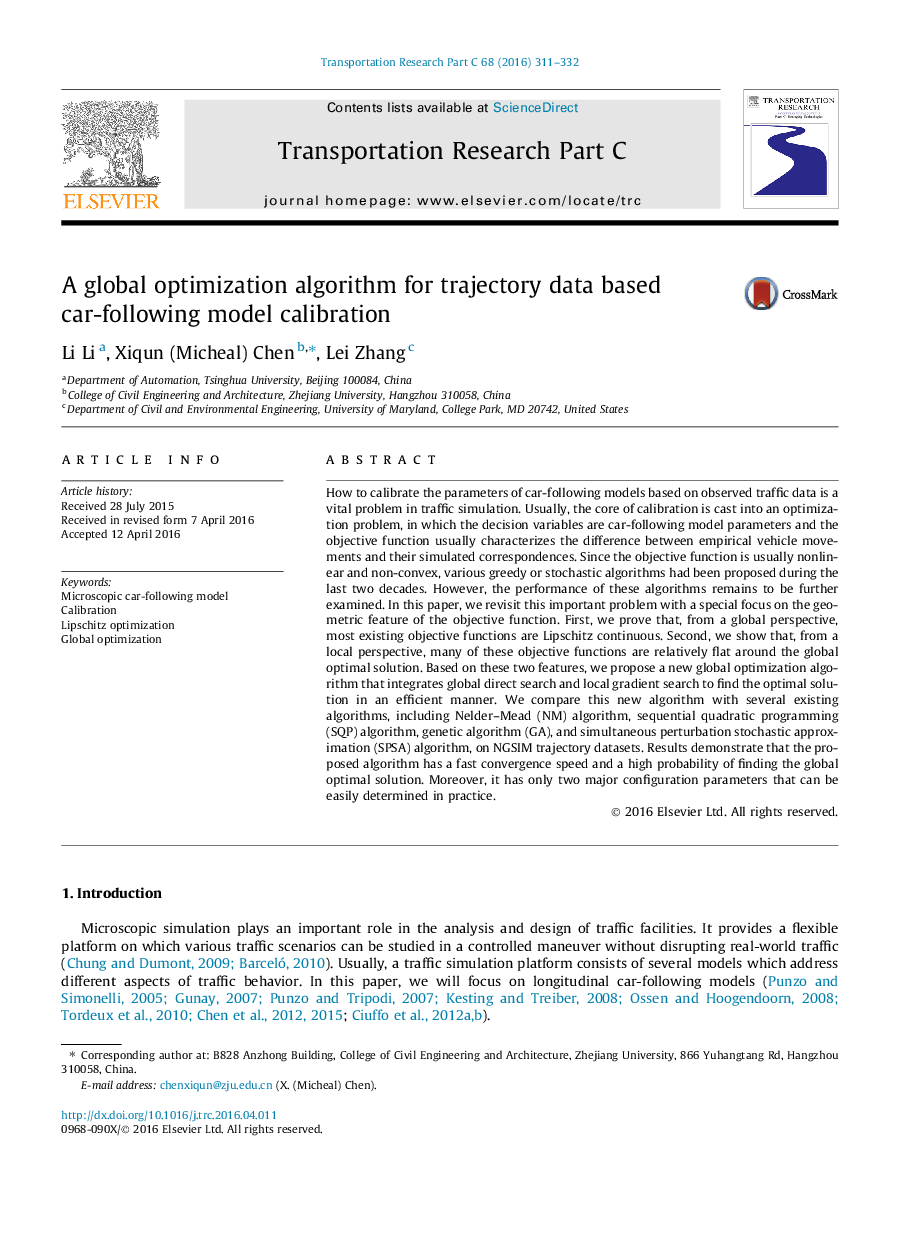| Article ID | Journal | Published Year | Pages | File Type |
|---|---|---|---|---|
| 6936379 | Transportation Research Part C: Emerging Technologies | 2016 | 22 Pages |
Abstract
How to calibrate the parameters of car-following models based on observed traffic data is a vital problem in traffic simulation. Usually, the core of calibration is cast into an optimization problem, in which the decision variables are car-following model parameters and the objective function usually characterizes the difference between empirical vehicle movements and their simulated correspondences. Since the objective function is usually nonlinear and non-convex, various greedy or stochastic algorithms had been proposed during the last two decades. However, the performance of these algorithms remains to be further examined. In this paper, we revisit this important problem with a special focus on the geometric feature of the objective function. First, we prove that, from a global perspective, most existing objective functions are Lipschitz continuous. Second, we show that, from a local perspective, many of these objective functions are relatively flat around the global optimal solution. Based on these two features, we propose a new global optimization algorithm that integrates global direct search and local gradient search to find the optimal solution in an efficient manner. We compare this new algorithm with several existing algorithms, including Nelder-Mead (NM) algorithm, sequential quadratic programming (SQP) algorithm, genetic algorithm (GA), and simultaneous perturbation stochastic approximation (SPSA) algorithm, on NGSIM trajectory datasets. Results demonstrate that the proposed algorithm has a fast convergence speed and a high probability of finding the global optimal solution. Moreover, it has only two major configuration parameters that can be easily determined in practice.
Related Topics
Physical Sciences and Engineering
Computer Science
Computer Science Applications
Authors
Li Li, Xiqun (Micheal) Chen, Lei Zhang,
